In 2023, the LIO funded two field schools :
- The first in Corsica, from October 1 to 9, involved around thirty participants. The internship in Corsica from October 1 to 9, 2023 involved 23 Master 1 Earth Sciences students. The objective of this internship was to confront students with a series of complex geological units in the fields of metamorphic and magmatic petrology as well as tectonics. In continuation of the field training at the University of Lyon 1 and the ENS of Lyon, the emphasis was placed on student autonomy. Firstly, they developed their abilities to characterize outcrops or the geology of a delimited area (creation of outcrop diagrams, maps, geological sections). Secondly, the students carried out work analyzing their observations in order to reconstruct the evolution of the study area and to characterize the processes linked to this evolution. The possibility of going to Corsica made it possible to work on an exceptional object, both in terms of its educational quality and its geological richness. We also took the opportunity of this internship to carry out with the Knowledge Diffusion Service of OSU Lyon a series of photographic shots in 2 and 3 dimensions which will be used in future teaching.
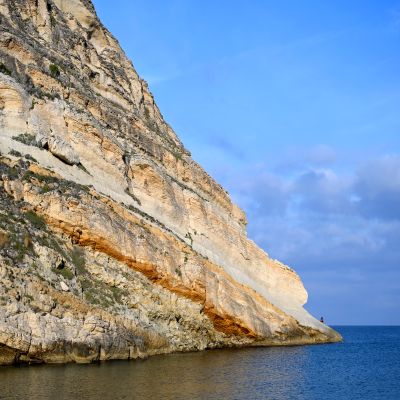
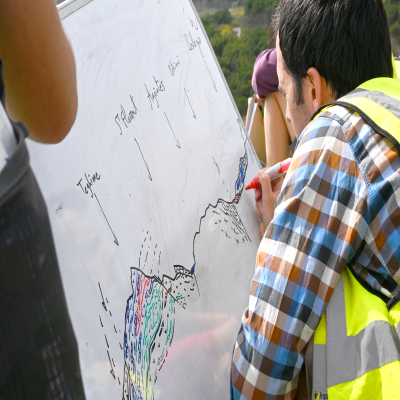
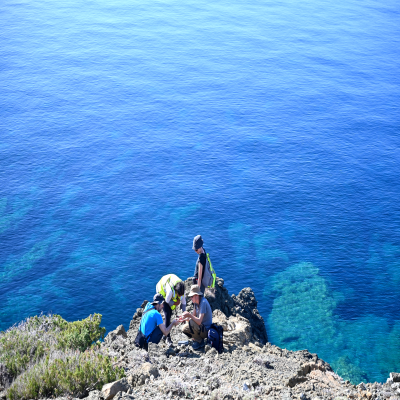
(Pictures credit : Antoine Rigaud)
- The second in Barrême, from September 25 to 29, also for around thirty participants. The Master1 STPE field course took place in the restricted sector of the Barrême-Senez syncline, with daily workshops spread out from North to South, over a distance of approximately 20 km. The stratigraphic interval covered by these workshops goes from the Upper Eocene to the Upper Oligocene. It is marked by a series of compressive tectonic phases with very high spatial variability of depositional environments in most periods. The objectives of this field internship were: to interpret the depositional environments on the basis of the analysis of key outcrops or by geological mapping, to understand the juxtaposition of the depositional environments to give a proximal polarity- distal and define their spatial limits, and to understand and interpret the dynamics of the depositional system and the stratigraphic evolution of the series studied in terms of sedimentation basin.
Furthermore, the labEx LIO participates every year in an internship in partnership with the Observatoire de Haute-Provence. During the month of September, students from the M2 Astrophysics of Claude Bernard Lyon 1 University, as well as those from the M2 Cosmology and Particle Physics, join their counterparts from the University of Montpellier for four nights of star observation.
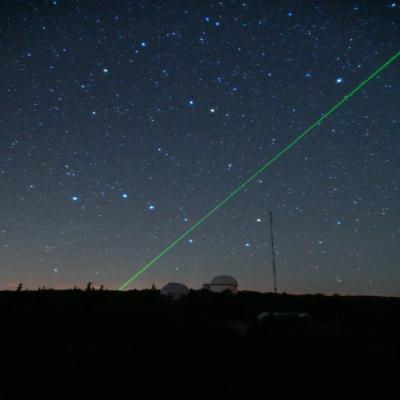
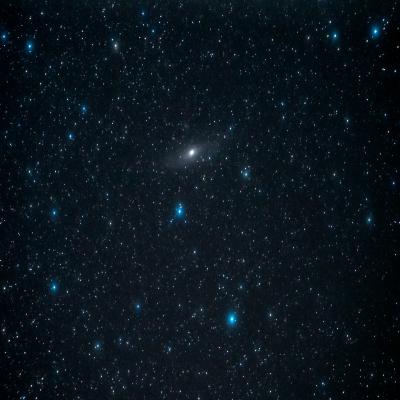
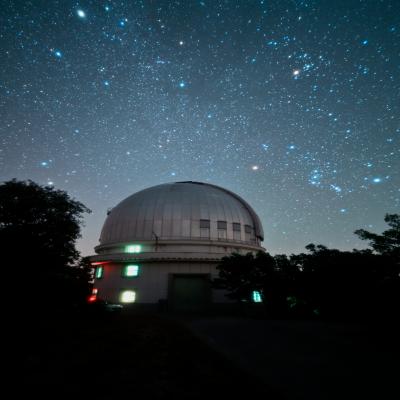
(Pictures credit : Julien Morin)